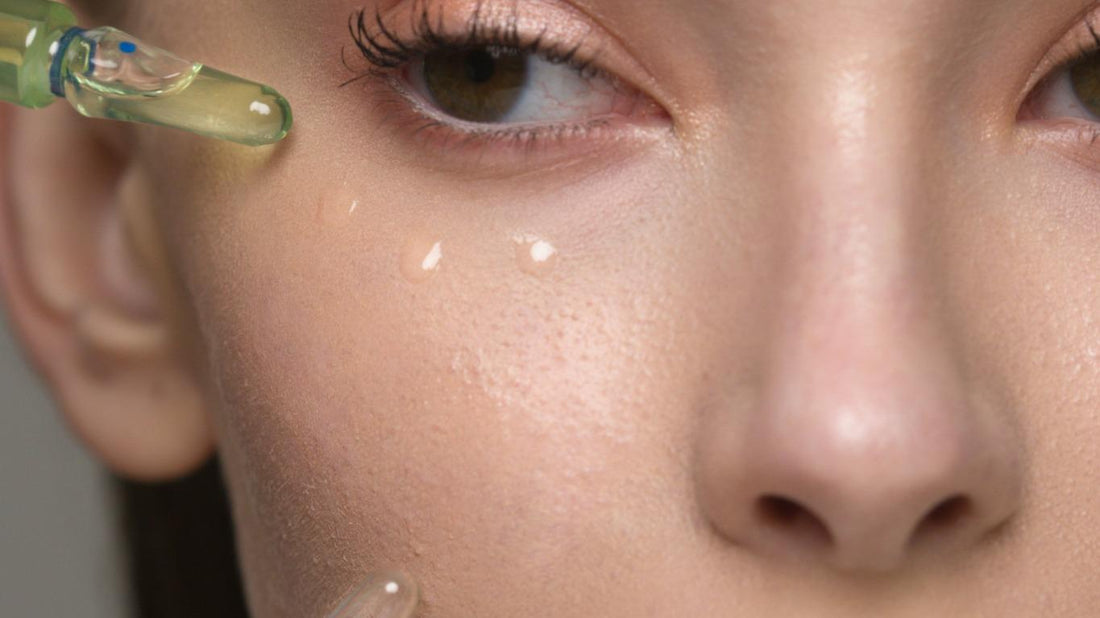
Ingredient Spotlight: Exosomes in Clean, Vegan Skincare
Share
In the evolving world of clean beauty, exosomes have emerged as one of the most talked‑about “next frontier” ingredients. Promoted as tiny messengers that boost repair and regeneration at the cellular level, they promise luminous, youthful skin with minimal fuss. But what exactly are exosomes, and how do they fit into a vegan, ingredient‑first skincare philosophy? Let’s dive in.
What Are Exosomes & How Do They Work in Skin
At their core, exosomes are nano‑sized extracellular vesicles (EVs) released by cells, typically between 40 and 160 nm in diameter. JCAD+2Wikipedia+2 They carry a molecular “cargo” — proteins, lipids, microRNAs, and other signaling molecules — that helps neighboring cells communicate and respond to environmental stressors or injuries. Goop+2PMC+2
In skin biology, exosomes can act as messengers to stimulate fibroblasts (cells that generate collagen and elastin), modulate inflammatory responses, and support the skin’s microenvironment toward repair and renewal. INKEY UK+3ScienceDirect+3PMC+3 Because they don’t contain live cells (unlike stem cells), they carry less risk of rejection or unwanted growth—all reasons why many see them as a gentler route to regenerative skincare. Goop+1
That said, the science is nascent. Many published studies are small, preclinical, or pilot in nature. WIRED+2ScienceDirect+2 Because exosomes are biological materials, formulation, sourcing, stability, and dosing become critical factors—and that’s where “clean beauty” scrutiny becomes essential.
Why Exosomes Are Intriguing for Vegan & Clean Formulations
When a brand promises exosome‑powered repair in a vegan or “clean” formulation, several challenges must be addressed:
-
Source & Ethical Transparency
Traditional exosomes often come from human mesenchymal stem cells, platelets, or umbilical cord tissue. JCAD+4WIRED+4Goop+4 That raises ethical, safety, and regulatory questions—especially when marketed as cosmetic products. The Guardian+1 Some cleaner skincare lines are exploring plant‑derived exosomes, biomimetic vesicles, or synthetic extracellular vesicle analogues, though research is more limited. WIRED+1 -
Stability & Integrity
Holding those delicate vesicles intact through manufacture, shelf life, and topical application is nontrivial. Many exosome ingredients degrade or lose efficacy over time. WIRED+1 -
Potency & Dosing Variability
Because exosomes are biological, different batches may differ in cargo composition or strength. There’s no universal standard for how much “exosome content” is effective. WIRED+2Goop+2 -
Regulatory & Safety Oversight
Some jurisdictions ban human‑cell–derived biologics in cosmetic products for good reason, citing risks of contamination or immunological reactions. The Guardian+1 In the U.S., cosmetics aren’t required to go through the same rigorous approval as drugs, which makes vigilance from the consumer side more important than ever.
Because of these considerations, truly vegan/plant‑based exosome alternatives—or formulations that mimic exosome mechanisms using botanical actives or liposomal carriers—are likely to align more easily with clean beauty ideals. When brands clearly disclose their source, purification method, and stability data, those are red flags worth seeking out.
How to Use Exosome‑Infused Skincare in a Daily Routine
Exosome formulas, when well made, are often designed as serums or ampoules to be used early (right after cleansing). Incorporate them gently:
-
In a fast-paced morning scene, someone might splash water, cleanse gently, then apply an exosome serum before layering moisturizer and SPF—all in a 2‑minute ritual.
-
At night, after double-cleansing or a mask step, exosome serums can help accelerate overnight repair, especially after stressors like sun exposure or environmental fatigue.
Because they are delicate, avoid pairing them immediately with strong acids, retinoids, or vitamin C unless the formula expressly supports such layering. Some brands recommend using exosomes on a “clean canvas” to protect their integrity. Vogue+2WIRED+2
It’s wise to patch-test first (outer arm or jawline) especially if your skin is reactive. Even gentle bioactives can trigger sensitivity in some. Over time (4–8 weeks), watch for improved luminosity, smoother texture, and overall balanced resilience.
Three Exosome Products Worth Exploring
Here are three vetted products already on the market that lean into exosome technology:
-
The INKEY List Exosome Hydro‑Glow Complex — a more affordable plant‑derived exosome serum designed for daily glow and texture smoothing.
-
Peach & Lily Miniprotein Exosome Bioactive Ampoule — formulated to deliver firming and radiant benefits with a light ampoule format.
-
Goop Beauty Exosome Hydration Therapy Serum — positioned as a luxury clean formula that emphasizes hydration, barrier support, and exosome innovation.
These can be integrated into your daily ritual, or serve as reference points when evaluating upcoming clean-beauty exosome launches.
Cautions, Claims & What to Look for
While the hype is compelling, here’s what smart consumers should watch for:
-
Authentic disclosure of exosome source (plant, synthetic, or animal/human)
-
Purity and batch consistency data (how many vesicles, cargo content, shelf stability)
-
Transparent formulation compatibility (which ingredients it can safely be paired with)
-
Clean‑beauty seals, third‑party testing, and non‑toxic excipients
-
Moderate claims (e.g. “supports renewal,” “boosts glow”) over hyperbolic promises of “replacing botox”
Because regulatory frameworks are still catching up, consumer discernment matters. Over time as more clinical trials are published, we’ll be better able to distinguish true performance from marketing spin.
In short, exosomes represent a fascinating frontier in ingredient science. For the clean, vegan skincare space, the promise lies not just in the vesicles themselves but in how transparently, intentionally, and responsibly they’re sourced and formulated. When you spot a brand that combines exosome innovation with full disclosure and clean standards, that’s a signal worth paying attention to.
